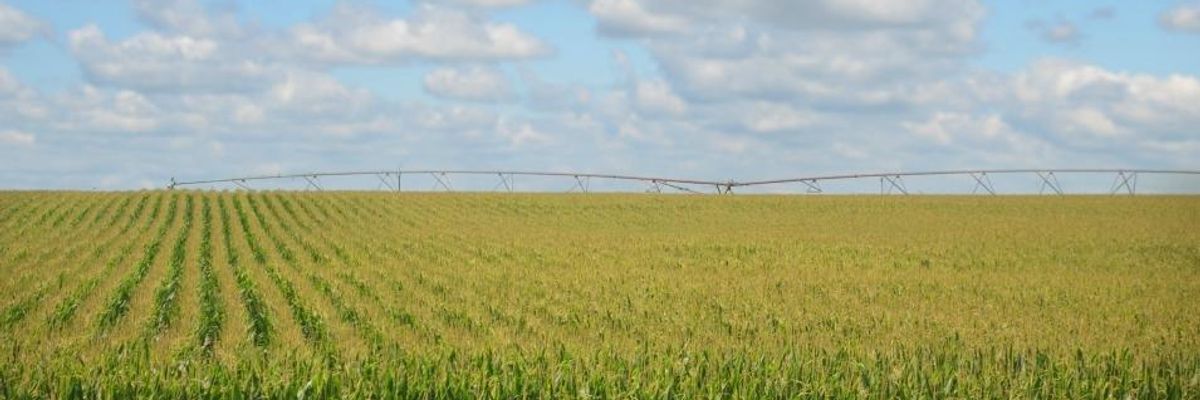Good farm policy works for rural people by stabilizing prices, encouraging the growth of rural communities, and helping farm families deal with natural disasters. This last point is particularly relevant now, as fires rage in the Western US, tornadoes, hurricanes and floods destroy communities around the country, and drought grips much of the South. Yet, instead of creating sensible farm policy that could lessen the effects of climate change and keep farmers on the land, our government promotes environmentally and economically disastrous overproduction.
The direction of most US farm policy concerning the environment and who actually profits from the system, is misguided. Yes, money is made in the food industry, with for example, Land O'Lakes reporting record profits in 2017, and the world's largest producer and exporter of meat, the Brazilian- based JBS,making huge profits from its control of just under 25% of the US beef market. Meanwhile, farmers are paid a fraction of the food dollar while bearing all the risk, including the brunt of extreme weather. Many farms depend on tax-payer subsidized crop insurance programs that guarantee a profit to private insurance companies. Then consider the conservation title of the Farm Bill, which should encourage farmers to take land out of production and finance environmentally-sustainable practices. Why did politicians cut conservation funding by $6 billion in 2014? The 2018 farm bill will make even deeper cuts, ending the Conservation Stewardship Program, which helps farmers start or improve responsible land, soil, and resource management practices.
This country is experiencing one of the worst farm crises in generations.
This country is experiencing one of the worst farm crises in generations. Low prices are driving grain, dairy, and livestock producers into debt and foreclosure, while Donald Trump's trade war with China, Mexico, and Canada further depress prices. Production costs including feed, labor, and machinery, are far in excess of sales revenues, as extreme weather adds even more volatility to an occupation plagued by uncertainty.
There is a single factor that overrides the environmental, economic, and cultural crisis of rural America - overproduction.
Since the 1970s, farmers were told to 'get big or get out,' and 'plant fence row to fence row.' Emphasizing production rather than stewardship has exacerbated the effects we experience following extreme weather. Fond du Lac county, Wisconsin, had 17 tornadoes touch down on August 28th. Similarly, throughout the state, tornadoes and subsequent flooding destroyed roads, homes, and farmland. The problem is that fence-row-to-fence-row farming of row crops leads to erosion, as heavy machinery compacts the soil and agrochemicals reduce soil biodiversity and water-holding capacity. As small farms get pushed out, the remaining farmers expand and focus on commodity grain crops. In 2018, soybean acreage in Wisconsin reached a record 2.7 million acres, up 7% over 2017, while corn acreage remained constant at 3.9 million acres. These two crops now dominate over half of the state's cropland. Less than 25% of Wisconsin's 10.1 million crop acres are devoted to pasture/hay/alfalfa and over 100,000 acres of this perennial forage is converted yearlyto corn and soybeans.
Farm policy must remedy, instead of contribute to the environmental problems that climate change aggravates. Establishing a price floor and ceiling for all commodity farm products would help small producers keep farming by stabilizing prices. This would also promote conservation, by removing incentives for surplus production while also promoting diversified cropping systems.
Current farm policy sacrifices stewardship on the altar of profitability. Controlling price and supply would return power to farmers and rural communities. Unfortunately, the Washington power structure cares little for the environment or working families.

